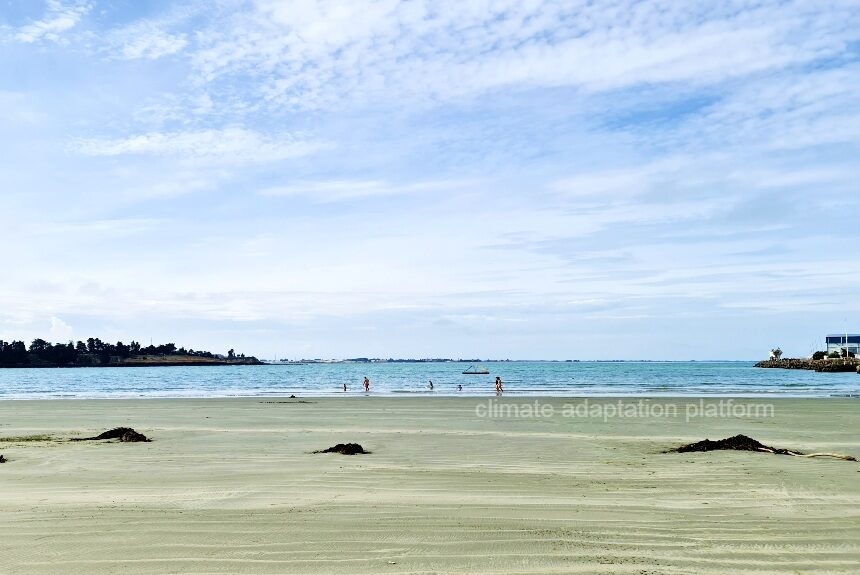Sea level rise in New Zealand is 1.7 millimetres per year on average from 1900 to 2008, according to data from NZ Sea Rise.
There is vertical land movement as the country sits on the plate boundary between the Australian and Pacific plates.
The Australian plate essentially pushes the Pacific plate down, causing an up-and-down land movement in the country. This means some areas are subsiding while others are going up.
Historically, the land has gone up in many places in the country, but in the lower part of the North Island and the eastern side of the lower North Island, the land subsides up to 8 millimetres per year.
The NZ Sea Rise programme has created an online tool, a map of New Zealand that identifies where the subsidence or uplift is projected to occur in 2300 due to sea level rise caused by climate change and the vertical land movement from the shifts in tectonic plates.
In New Zealand, the vertical land movement – either the uplift or subsidence of land- can be massive when caused by earthquakes. Still, it can also occur in more minor shifts and happens continuously due to the movement of plates.
These small land movements, combined with sea level rise from climate change occurring at an average of 3.5 mm per year, can double the annual increase in sea-level rise in some areas of New Zealand.
NZ Sea Rise has connected this vertical land movement data with climate change data to provide sea level rise projections in the country.
These sea level rise projections inform New Zealand’s first-ever national adaptation plan and the coastal hazards guidance for local government that provides guidance and advice to local communities, planners, infrastructure advisers, and businesses to prepare and adapt to coastal hazards.
New Zealand’s national adaptation plan includes how the country can tackle rising sea levels and other climate risks like droughts, wildfires, heatwaves, storms, and floods- one in seven New Zealanders lives in flood-prone areas.
Climate change-related floods and droughts between 2007 to 2019 have cost New Zealand an estimated $840 million in insured damages and economic losses, according to the New Zealand Climate Change Research Institute and NIWA report, “Estimating financial costs of climate change in New Zealand.“
.The National Adaptation Plan aims to help New Zealanders make risk-informed decisions, and to do would entail current and future climate risks to the country’s homes, businesses, and communities.
According to NZ’s National Adaptation Plan, communities in the county already threatened by natural hazard events have various adaptation options to reduce risks. These climate adaptation options include avoiding hazards or threats, building protection or barriers like seawalls and levees, accommodation (elevating buildings and houses), and managed retreat, which consists of leaving the highly threatened and exposed areas and rebuilding or developing in higher and safer grounds.
New Zealand’s national adaptation plan sets out policy actions to address climate change’s threats across five areas: the natural environment, built environment (buildings, houses, and places), infrastructure and communities, economy, and financial systems.
Other countries can learn from New Zealand’s climate adaptation plan. They could potentially reference New Zealand’s NAP to suit their context.
Sources:
Predicting sea-level rise for Aotearoa New Zealand. (n.d.) NZ Sea Rise. Retrieved from https://www.searise.nz/
This is how New Zealand is planning to tackle rising sea levels. (2022, May 12). World Economic Forum. Retrieved from https://www.weforum.org/agenda/2022/05/new-zealand-rising-sea-levels-adaptation/
Adapt and thrive: Building a climate-resilient New Zealand. Aotearoa New Zealand’s First National Adaptation Plan. At a Glance. (2022, August). Ministry for the Environment. Retrieved from https://environment.govt.nz/assets/publications/MFE-AoG-20665-GF-National-Adaptation-Plan-Summary-2022-v5-WEB.pdf



Leave a Reply